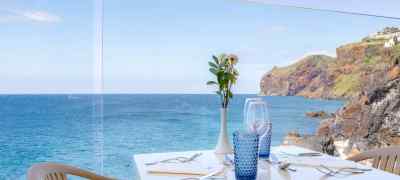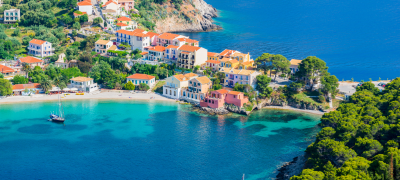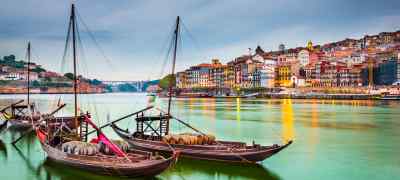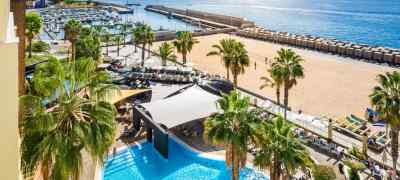By Kenya Barrett
Set on the oceanside hills of Portugal, Lisbon is quite the breathtaking capital to be seen. A beautiful combination of cuisines, history, and culture surely make this amazing city a bucket list destination.
What to Know
Sitting atop a string of hills that line the Atlantic Ocean, Lisbon is a magnificent city with a heart of gold. Historically, Lisbon served as a trading port for Portugal in the 16th century under the rule of Vasco de Gama and Magellan. The aftermath of a horrible earthquake in 1755 forced Libson into a period of financial decline before achieving power again by the 19th century. Lisbon has then held the title of being one of Europe’s most inexpensive cities while also being the most captivating.
When to Go
Located right on the Iberian Peninsula, Lisbon has some of the best weather in the region! Summers are graced with lots of sun and warm breeze, while winters near reach below 10°C. The best time to visit Lisbon is between June and August, while the temperatures are their warmest and the city is its most vibrant. If you’d like a humbler experience of Lisbon, feel free to visit during the months of April, May, September and October.
How to Get Around
Unfortunately, Lisbon isn’t ideal for those who enjoy driving. However, the terrain is perfect for individuals who prefer to adventure around the city by foot. Consider packing a few sets of comfortable trainers and a map to get a thorough view of the city via walking. In the event that you don’t feel like going for a stroll then you can hop aboard the city’s most popular street-car, Tram 28. This iconic tram travels through the historic Alfama district as well as a few others.
Where to Eat
Because Lisbon is a coastal city, the cuisine primarily revolves around seafood dishes. Octopus, clams, sardines, and codfish are often used as the basis for many entrees cooked in the area. As for sweets, this city simply has no competition. Pastel de nata is a particular dessert that is popular among the masses. It is an egg custard that is lightly dusted with sugar and cinnamon. Yum! Check out a few restaurants is Lisbon where you can enjoy a flavourful dish:
- Pasteis de Belem R. de Belém 84-92, 1300-085 Phone: +351 21 363 7423
- Mercado Da Ribeira (Time Out Market) 481, Av. 24 de Julho, 1200-109 Phone: +351 21 346 1199
- Piteu Da Graca Largo da Graça 95-96, 1170-165 Phone: +351 21 887 1067
- Cerevejaria Ramiro Av. Almirante Reis nº1 - H, 1150-007 Phone: +351 21 885 1024
- Park Calçada do Combro, 58 Bairro Alto Phone: +351 215 914 011
- Manteigaria Rua do Loreto 2, 1200-108 Phone: +351 21 347 1492
- Taberna Da Rua Das Flores Rua das Flores 103, 1200-015 Phone: +351 21 347 9418
- Restaurante Ponte Final R. do Ginjal 72 Phone: +351 21 276 0743
What to See
Jeronimos Monastery
In 1502, the iconic Jeronimos Monastery was constructed by King Manuel I. It stands as one of the most amazing sites in Portugal and features Manueline architecture – a reflection of wealth during that time period. While entrance to the monastery is free of charge, visitors should consider paying admission to the cloisters which are some of the most beautiful in the world. Feel free to explore the National Museum of Archaeology, which is located at the monastery as well.
Sao Jorge Castle
If you’re interested in capturing the best views of Lisbon, make your way to the Sao Jorge Castle. The structure’s historic roots trace back to the 12th century when it was built to stand as a royal palace. Sao Jorge Castle is located in a tranquil park and provides impeccable views of the historic Ponte 25 de Abril and the ancient city of Tagus Estuary.
Alfama
One of the oldest districts in Lisbon is the Alfama neighborhood. Developed more than a millennium ago, the area is situated between the Sao Jorge Castle and the Tagus River, and was ruled by the Moors. Today, visitors can explore the region by car or can hop aboard the tram for a true local experience.
Belem Tower
The Belem Tower ordinarily served as Lisbon's waterfront defense tower. Also built by King Manuel during his reign, the structure features a Manueline design that is unique to all buildings developed by the King. This landmark was the first and last sight that sailors would see as they sailed in and out of the city.
Rossio Square
Rossio Square is situated in the centre of Lisbon and serves a commonplace for locals and tourists alike. In the 19th century, the square was paved with cobblestones in wave patterns, making it one of the most picturesque places in the city.
Tips and Tricks
- Stop into a tavern in Alfama to enjoy fado, the traditional music of Portugal.
- Check out Lisbon’s 1.5-mile-long suspension bridge, Ponte 25 de Abril – one of the longest in the world.
- Sip on an aperitif, a local port tonic that is served with a slice of lime.
- Download the Lisbon Street Art app to uncover the unique street art of Lisbon.
Day Trips
Cascais
If you’re looking for fun in the sun, consider travelling 40 minutes to the coastal village of Cascais. A surfer’s paradise, Cascais is the perfect embodiment of Portugal’s seafaring history. Lay out on Praia da Rainha beach, take a photo of Boca do Inferno (hell’s mouth) cave and do some shopping at Mercado da Vila market.
Sintra
One of the most romantic cities of Europe has to be Sinta – and it’s just 40 minutes away from the centre of Lisbon. During your time here, consider exploring the historic centre, and snapping photos from the hilltop Pena Palace. This 19th century palace was constructed by King Ferdinand and features a vibrantly unique style of architecture.
Obidos
If you’re interested in the Medieval theme, be sure to visit the village of Obidos. Just an hour's ride from the capital, Obidos is famous for its white washed buildings, cobblestones, and random summertime festivals. Keep an eye out for the Medieval Fair and the International Chocolate Festival!
















